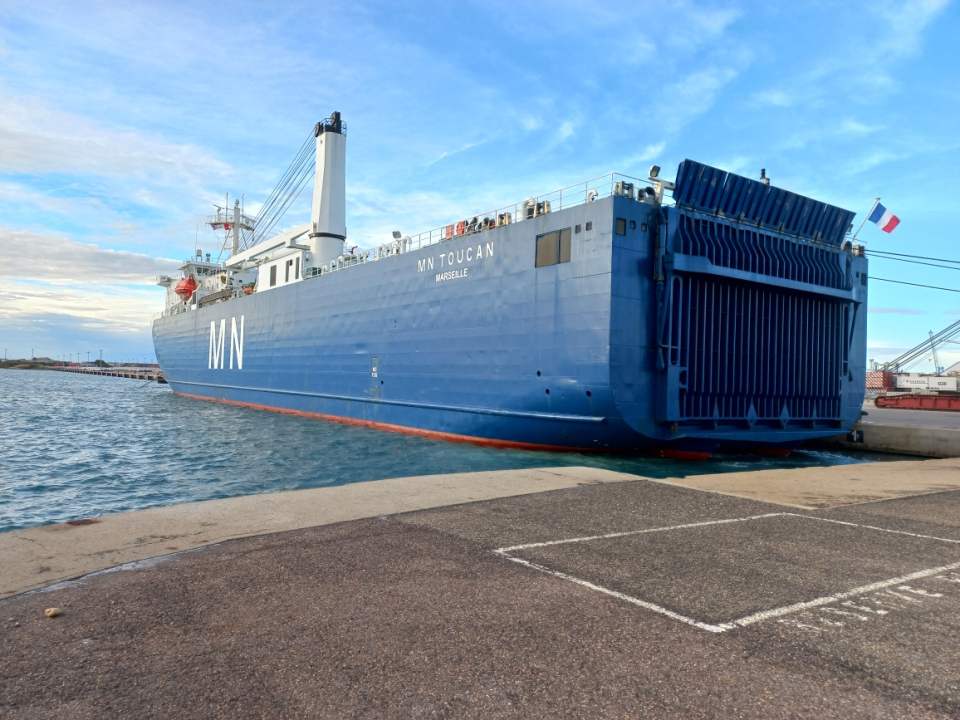Publié le 30 septembre 2022

The satellite along with 10 large containers of support equipment were loaded onto the MN Toucan cargo ship and set off from the port at Fos-sur-Mer, which is close to Marseille, on 29 September 2022.
The first Meteosat Third Generation Imager, MTG-I1, satellite plus 10 large containers of support equipment were loaded onto the MN Toucan cargo ship on 29 September and readied for the 12-day voyage to French Guiana.
On hearing that the precious cargo had left the port at Fos-sur-Mer, which is close to Marseille, Paul Blythe, ESA’s Meteosat Programme Manager, jokingly remarked, “I hope they know where Kourou is!”

MTG-I1 boards MN Toucan
Followed by, “Has anyone checked the weather forecast for the crossing and did anyone see Raffa (who is responsible for MTG-I1’s assembly, integration and testing) get off the boat?”
Everyone has subsequently been reassured that he did not stow away and will soon fly out to Kourou with the advance launch campaign team to meet this special shipment on the other side.
The shipment marked the end of an intense period of preparation at Thales Alenia Space’s facilities in Cannes where MTG-I1 had undergone final testing, integration and procedures to lock the parts of the satellite that will be deployed once it is in space such as the solar array and various antennas.
MTG-I1 carries two completely new instrument that will deliver high-quality data to improve weather forecasts: a Flexible Combined Imager and Europe’s first Lightning Imager.

Meteosat Third Generation weather satellites
The Flexible Combined Imager has more spectral channels and is capable of imaging in higher resolution compared to current Meteosat Second Generation’s Spinning Enhanced Visible and Infrared instrument.
The Lightning Imager offers a completely new capability for European meteorological satellites. It will continuously monitor more than 80% of the Earth disc for lightning discharges, taking place either between clouds or between clouds and the ground.
This new instrument will allow severe storms to be detected in their early stages and will therefore be key for issuing timely warnings. Its detectors are so sensitive that will be able to detect relatively weak lightning, even in full daylight.
MTG-I1 also carries two smaller payloads for data collection from remote science beacons and for search and rescue by detecting emergency beacons.